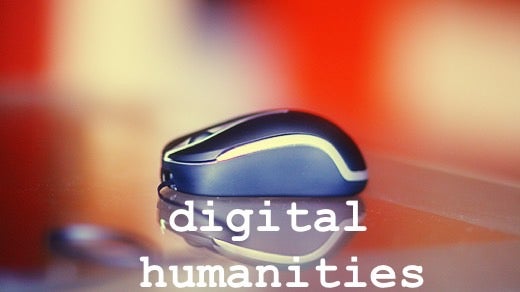Open source software is changing academic research, enabling new discoveries and innovation in ways that were previously impossible. Every month I take a look at open source tools you can use in your digital humanities research and some humanities research projects that are using open source tools today.
The digital humanities is where traditional humanities scholarship—or, the academic study of arts, language, history, and the like—meets the digital age. By using technology in new and innovative ways, digital humanities scholars can create research projects that explore topics in ways that were not possible (or were extremely laborious undertakings) before computers.
Text/data mining, visualization, information retrieval, and digital publishing are some of the key features of digital humanities research. With computers, it is possible to analyze text, discover patterns, and visualize data with relative ease. In addition, digital projects can be much more accessible to the general public than traditional scholarship. For example, digital humanities projects can build connections to the past, like the OldNYC project is doing by mapping historical photos from the New York Public Library and the Dutch Ships and Sailors project is doing by providing "an infrastructure for maritime historical datasets, linking correlating data through semantic web technology," highlighting the rich maritime history of the Netherlands.
In May this year, a few interesting projects became open source and several useful resources were published, along with many other developments. I have highlighted the most interesting of them below. Perhaps one will inspire you in your own digital humanities research, or help you learn about this interesting field of scholarly research.
Binder from the Museum of Modern Art
The New York Museum of Modern Art announced the release of Binder, a web-based, open source "application designed for overseeing and managing the active preservation of digital collections." Binder helps museum curators deal with the complexities of curating digitized and born-digital objects. It integrates with Archivematica and Access to Memory to provide museums with information about their collection with overview screens for displaying information the collection as a whole or about individual items, plus much more. MoMA is currently using Binder, but according to the official documentation, "in its present form the application is not ready for broad use in other institutional settings without further development." Binder's source code is hosted on GitHub for any developers who wish to contribute to that development effort.
If you would like to learn more, there is a short video available on YouTube which provides a brief overview of how Binder works.
Getty Union List of Artist Names
The Union List of Artist Names is the third set of Linked Open Data released under an Open Data Commons Attribution License by the Getty Research Institute. Combined with the first two releases, the Art & Architecture Thesaurus and the Thesaurus of Geographic Names, ULAN provides researchers with connected data which simplifies the research process by, for example, identifying variant spellings and aliases of personal or geographic names, enabling researchers to build connections they might not have been able to make if the linked data was not open content. Linked data makes connections clear and releasing it under an open license makes it easy for researchers to use in any manner they wish.
And this is only the beginning, the release of these three datasets is part of the Getty's broader Open Content Program. The Getty Research Institute's Linked Open Data page provides more details about current and future releases of open datasets.
Replace jQuery functions with D3
D3.js and jQuery are both powerful JavaScript libraries. jQuery is general purpose library used by many websites, while D3.js is a specialized library used for data visualization. You can, of course, use them both together, using D3 functions for data visualization and jQuery for everything else, but that means importing both libraries and writing code that is somewhat inconsistent (the syntax of jQuery and D3 functions are not the same).
Developers looking to avoid these issues should check out webkid's excellent how-to guide showing how to use D3 to do things that are traditionally done using jQuery. And for jQuery functions that do not have exact equivalents in D3, there are code examples showing how to write D3-style functions for performing the required tasks. Webkid's extended version of D3 with all the custom functions they have added is available on GitHub.
Developing international and interoperable rights statements
The Digital Public Library of America and Europeana are collaborating on a project to standardize usage rights statements. Despite operating under different copyright laws (United States and European Union), the DPLA and Europeana are keen to have a clear and compatible way to share copyright information with collaborators and users. To that end, work has begun on developing a technical framework for interoperable rights statements. Currently, they are seeking comments on their Rights Statement White Paper and their Technical Infrastructure White Paper. The deadline for comments on both papers is June 26, 2015.
Send questions you would like to see answered and topics of interest to Joshua Allen Holm. To submit your own article on this topic, send a submission to the Opensource.com editorial team.






Comments are closed.